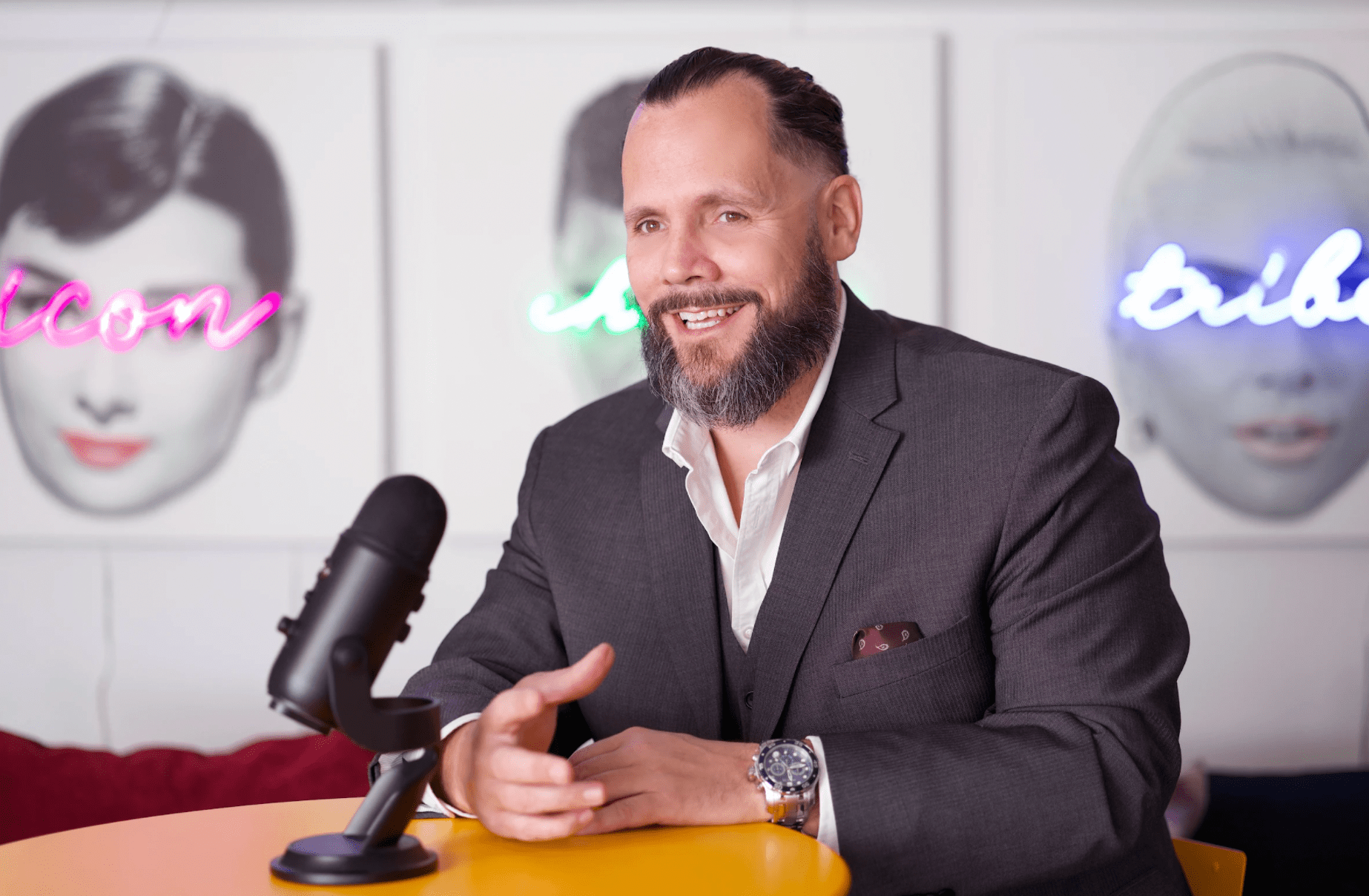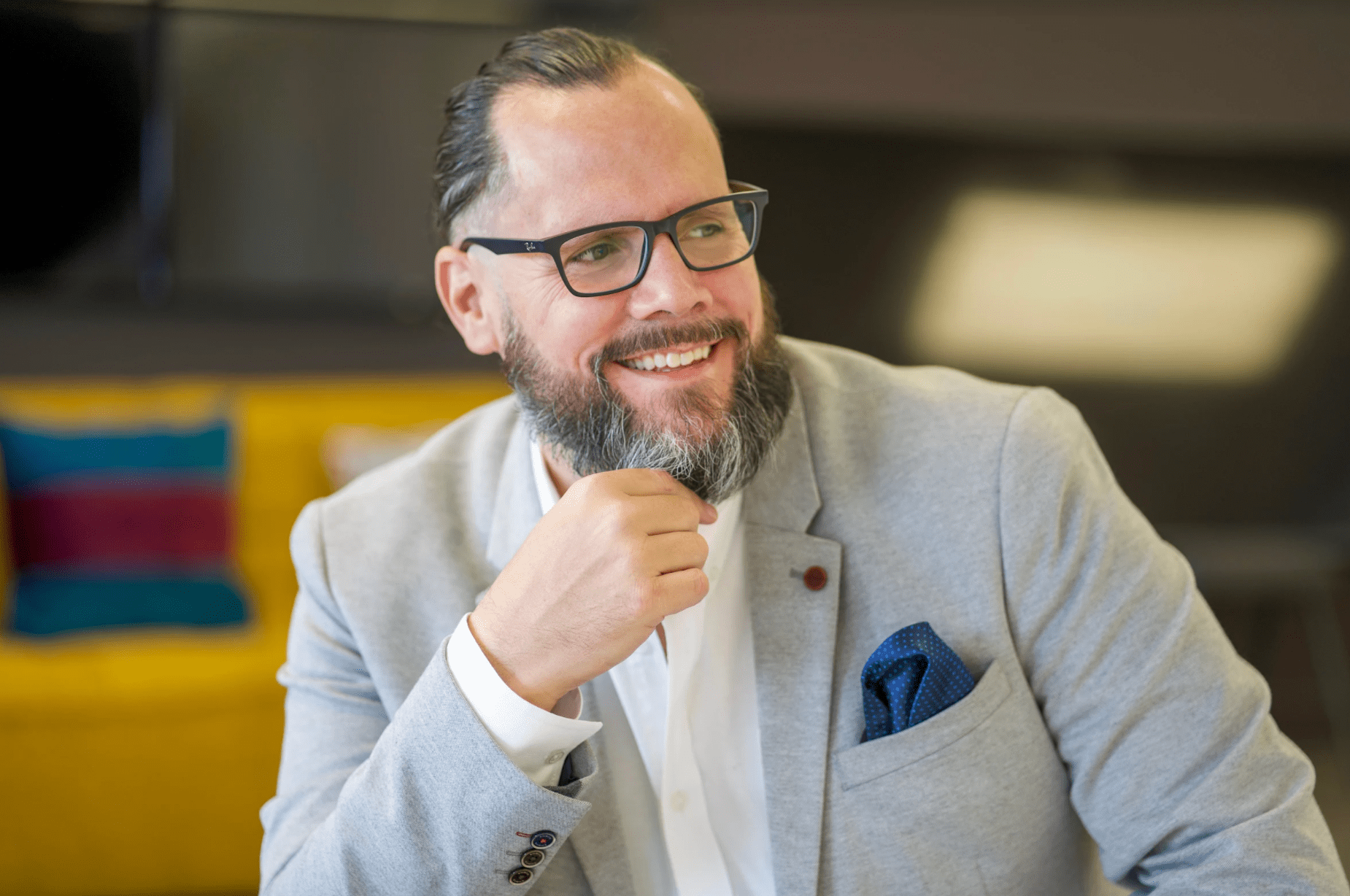Business
Reinvention and Perseverance as an Entrepreneur: How a Successful Traditional Entrepreneur Adapted Into a Prosperous Life Coach

What does success mean to you?
For many, success is attributed to wealth, fame, and glory. As a society, we tend to enhance these stereotypes by rewarding wealth with accolades. But what happens when all of this is achieved?
Taking a linear approach to success is likely going to result in disappointment. When we attach our own sense of worth to a singular metric like money— we might become so driven by money that we lose sight of what our purpose is.
Evolution is inherently tied to human growth and adaptation; that’s why we derive pleasure from seeking challenges, overcoming them, and reaching this fruition of growth.
There are more ways to be “prosperous” than the conventional means. As a longstanding and successful serial entrepreneur, Randy Belham knows exactly what it’s like to have everything, but nothing at all. And he knows better than most, that sometimes you have to go to zero, to experience a profound shift in how you define success.
Here is how redefining success in our own minds can lead to the manifestation of prosperity.
Reconnecting with Our Purpose
Even financially successful individuals combat the feeling of emptiness. Often they realize that having accomplishments that are not tied to a greater purpose, do not deliver a true sense of fulfillment.
One common question Randy Belham gets from his clients is “what’s next?”
Randy is a formal entrepreneur turned life coach, whose clientele generally consists of people in their early to late 40s, who’ve achieved a significant level of financial wealth in their lives but are rattled with the feeling of lacking.
Randy was a well-established entrepreneur with a couple of businesses under his belt, as well as being married. After a series of traumatic life events like his divorce, he felt completely lost and consumed by his poor habits and choices with no clear purpose to drive him forward.
He decided to embark on a spiritual healing journey that helped him reconnect with his innate passion for coaching and helping others. He was able to turn this into his next venture.
It Begins with Awareness
For someone that is struggling to find their true calling—the first step is to cultivate a deeper awareness of our thoughts and actions. Explore passions, fears, and core values and how the things you’re pursuing connect to them. People often wonder why they’re unhappy even with stable jobs and finances, without realizing that the majority of their activities don’t align with their values or purpose. But you won’t know unless you clearly identify what these are.
It’s important to be able to challenge your own mindset and the way you define your self-worth and success.
Belham views coaching as a way to help clients “shine a light on their blind spots.” Cultivating awareness means shedding fears and stigmas around help. 90% of the time, his clients experience a breakthrough moment, and this is one of the reasons Belham is passionate about coaching.
Letting go of Attachments

When we’re attached to ideas, things, or thoughts; losing them puts us in a place of deep suffering. On the contrary, when we learn to see things as non-permanent; we’re releasing a lot of the ego that comes with success. We no longer attribute what we’ve achieved in our lifetime to just us because we’re not the sole owners of our success.
“Things have to come and go”, says Randy. As the old adage goes, “Attachment is the root of suffering.” Randy practices journaling and meditation daily because it helps to remind him to be grateful for the present, to not hold anything permanently, and to enter an optimal mindset. Holding an optimal mindset helps Randy be the best version of himself so he can serve his clients.
Growing is not Always Easy
To grow, we need to consistently exert strain on our minds or bodies. The key is to push past the urge to procrastinate and build a sustainable routine that helps edge you closer to your goals. Similar to working hard through rejections and iterations to build a successful business, to build a new, successful version of you requires the same level of tenacity.
You have to overcome your own negative thoughts and find a way to change the patterns that are holding you back from finding long-term solutions.
On the relevancy of imposter syndrome, which describes a condition where people feel unworthy of their success, Randy advises “if you’re there, it’s because you deserve it. Now you have to question why you think you’re undeserving of good things”.
This requires gradually countering our negative emotional state with positive messaging and turning that into a habit. The more you get into a habit of rewarding yourself for your accomplishments, the more you’ll be incentivized to take your life to the next level.
Conclusion
These days, a big emphasis is put on the individual to be 100% responsible for their own success— often meaning their financial security. Acquiring wealth is only one part of the equation, the next comes deeper life satisfaction which requires a more holistic view of success.
You don’t need to be a millionaire, to start experiencing the profound results of becoming connected to your purpose. You might even find that the more connected to it you are, the more prosperous you will feel.
Business
High Volume, High Value: The Business Logic Behind Black Banx’s Growth

In fintech, success no longer hinges on legacy prestige or brick-and-mortar branches—it’s about speed, scale, and precision. Black Banx, under the leadership of founder and CEO Michael Gastauer, has exemplified this model, turning its high-volume approach into high-value results.
The company’s Q1 2025 performance tells the story: $1.6 billion in pre-tax profit, $4.3 billion in revenue, and 9 million new customers added, bringing its total customer base to 78 million across 180+ countries.
But behind the numbers lies a carefully calibrated business model built for exponential growth. Here’s how Black Banx’s strategy of scale is redefining what profitable banking looks like in the digital age.
Scaling at Speed: Why Volume Matters
Unlike traditional banks, which often focus on deepening relationships with a limited set of customers, Black Banx thrives on breadth and transactional frequency. Its digital infrastructure supports onboarding millions of users instantly, with zero physical presence required. Customers can open accounts within minutes and transact across 28 fiat currencies and 2 cryptocurrencies (Bitcoin and Ethereum) from anywhere in the world.
Each customer interaction—whether it’s a cross-border transfer, crypto exchange, or FX transaction—feeds directly into Black Banx’s revenue engine. At scale, these micro-interactions yield macro results.
Real-Time, Global Payments at the Core
One of Black Banx’s most powerful value propositions is real-time cross-border payments. By enabling instant fund transfers across currencies and countries, the platform removes the frictions associated with SWIFT-based systems and legacy banking networks.
This service, used by individuals and businesses alike, generates:
- Volume-based revenue from transaction fees
- Exchange spreads on currency conversion
- Premium service income from business clients managing international payroll or vendor payments
With operations in underserved regions like Africa, South Asia, and Latin America, Black Banx is not only increasing volume—it’s tapping into fast-growing financial ecosystems overlooked by legacy banks.
The Flywheel Effect of Crypto Integration
Crypto capabilities have added another dimension to the company’s high-volume model. As of Q1 2025, 20% of all Black Banx transactions involved cryptocurrency, including:
- Crypto-to-fiat and fiat-to-crypto exchanges
- Crypto deposits and withdrawals
- Payments using Bitcoin or Ethereum
The crypto integration attracts both retail users and blockchain-native businesses, enabling them to:
- Access traditional banking rails
- Convert assets seamlessly
- Operate with lower transaction fees than those found in standard financial systems
By being one of the few regulated platforms offering full banking and crypto support, Black Banx is monetizing the convergence of two financial worlds.
Optimized for Operational Efficiency
High volume is only profitable when costs are contained—and Black Banx has engineered its operations to be lean from day one. With a cost-to-income ratio of just 63% in Q1 2025, it operates significantly more efficiently than most global banks.
Key enablers of this cost efficiency include:
- AI-driven compliance and customer support
- Cloud-native architecture
- Automated onboarding and KYC processes
- Digital-only servicing without expensive physical infrastructure
The outcome is a platform that not only scales, but does so without sacrificing margin—each new customer contributes to profit rather than diluting it.
Business Clients: The Value Multiplier
While Black Banx’s massive customer base is largely consumer-driven, its business clients are high-value accelerators. From SMEs and startups to crypto firms and global freelancers, businesses use Black Banx for:
- International transactions
- Multi-currency payroll
- Crypto-fiat settlements
- Supplier payments and invoicing
These clients tend to:
- Transact more frequently
- Use a broader range of services
- Generate significantly higher revenue per user
Moreover, Black Banx’s API integrations and tailored enterprise solutions lock in these clients for the long term, reinforcing predictable and scalable growth.
Monetizing the Ecosystem, Not Just the Account
The genius of Black Banx’s model is that it monetizes not just accounts, but entire customer journeys. A user might:
- Onboard in minutes
- Deposit funds from a crypto wallet
- Exchange currencies
- Pay an overseas vendor
- Withdraw to a local bank account
Each of these actions touches a different monetization lever—FX spread, transaction fee, crypto conversion, or premium service charge. With 78 million customers doing variations of this at global scale, the cumulative financial impact becomes immense.
Strategic Expansion, Not Blind Growth
Unlike many fintechs that chase customer acquisition without a clear monetization path, Black Banx aligns its growth with strategic market opportunities. Its expansion into underbanked and high-demand markets ensures that:
- Customer acquisition costs stay low
- Services meet genuine needs (e.g., cross-border income, crypto access)
- Revenue per user grows over time
It’s not just about acquiring more customers—it’s about acquiring the right customers, in the right markets, with the right needs.
The Future Belongs to Scalable Banking
Black Banx’s ability to transform high-volume engagement into high-value profitability is more than just a fintech success—it’s a signal of what the future of banking looks like. In a world where agility, efficiency, and inclusion define competitive advantage, Black Banx has created a blueprint for digital banking dominance.
With $1.6 billion in quarterly profit, nearly 80 million users, and services that span the globe and the blockchain, the company is no longer just scaling—it’s compounding. Each new user, each transaction, and each feature builds upon the last.
This is not the story of a bank growing.
This is the story of a bank accelerating.
-

 Tech4 years ago
Tech4 years agoEffuel Reviews (2021) – Effuel ECO OBD2 Saves Fuel, and Reduce Gas Cost? Effuel Customer Reviews
-

 Tech6 years ago
Tech6 years agoBosch Power Tools India Launches ‘Cordless Matlab Bosch’ Campaign to Demonstrate the Power of Cordless
-

 Lifestyle6 years ago
Lifestyle6 years agoCatholic Cases App brings Church’s Moral Teachings to Androids and iPhones
-

 Lifestyle4 years ago
Lifestyle4 years agoEast Side Hype x Billionaire Boys Club. Hottest New Streetwear Releases in Utah.
-

 Tech7 years ago
Tech7 years agoCloud Buyers & Investors to Profit in the Future
-

 Lifestyle5 years ago
Lifestyle5 years agoThe Midas of Cosmetic Dermatology: Dr. Simon Ourian
-

 Health6 years ago
Health6 years agoCBDistillery Review: Is it a scam?
-

 Entertainment6 years ago
Entertainment6 years agoAvengers Endgame now Available on 123Movies for Download & Streaming for Free
